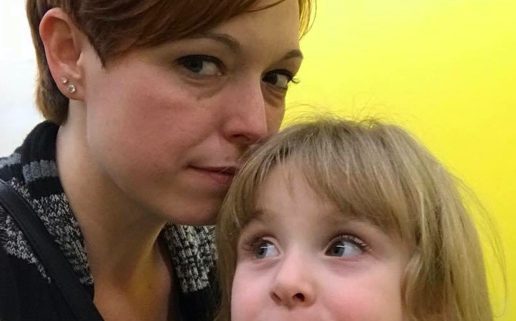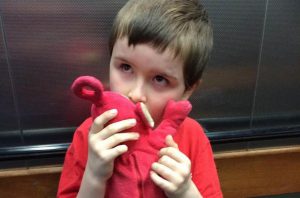Freeing My Little Songbird
 Bright lights, loud tones or noises, sights that are too overwhelming to focus on. The room, and therefore the world, has erupted into frightening chaos. Your mind and your body react with fight or flight, and in most cases both. You want out, you need to get out, your body can’t handle this overstimulation at all.
Bright lights, loud tones or noises, sights that are too overwhelming to focus on. The room, and therefore the world, has erupted into frightening chaos. Your mind and your body react with fight or flight, and in most cases both. You want out, you need to get out, your body can’t handle this overstimulation at all.
And like a caged bird that just wants to be set free from the entrapment that you feel, you begin to thrash around in this cage. You fight so very hard to escape so that you can take flight and feel safe and at peace again. Sometimes during your thrashing and flailing around, you get hurt and destroy the inside of the cage. You don’t care—you just want to get out so that you can breathe…. You want to breathe and you want to stop feeling so suffocated and trapped.
How do I know this?
Because, my sweet little bird, I’ve watched you go through this so many times. And I’ve tried so hard to help you and free you from this torment and torture.
My little bird, my daughter Zoey. I watched you have such an experience just recently, and it wasn’t your first and I know it won’t be your last. We did our best to get through it, just like we always do and always will.
This time it was a new appointment and an evaluation with a new therapist. The door closed and the therapist locked the door and it was as if you were locked in a new unfamiliar cage, with new lights, sounds, smells and colors all around.
Fight and flight commenced immediately!
I watched as you thrashed and grabbed anything in your way and tore apart this tiny room. This little flightless bird was destroying this little cage and nothing was safe, and neither were you or anyone else who happened to be in the cage with you.
I needed to help you.
I grabbed you with my arms around yours and I began shouting, lovingly: “Zoey, you’re OK. You’re OK. It’s OK. You’re safe!”
As I held you in my arms, we fell back into two oversized “crash pads” and I could hear and feel both of our heartbeats so loudly. We got to our feet and before I could stop you, you picked up a chair and threw it at your captor.
I sprang into action once more as this bird raged on. This time you were flailing on your back on the floor, and I rushed and hovered over you. I hugged you tight as you were unable to focus and watched as you continued to scream, all while still trying to fly away.
I hugged you with my arms tightly wrapped around your body, and I began to sing.
“Wise men say, only fools rush in, but I can’t help…”
You focused and you made direct eye contact with me. You, my little songbird, looked up at me and sang right back at me, “…falling in love with you.”
And then, at that moment, my little bird was set free. You came back to me.
This is what my daughter’s autism is like.



 A few weeks ago, we shared the news that Toys “R” Us stores in the U.K. would be offering quiet holiday shopping hours this past November 6th, so families of children (and adults) with autism could take them shopping in a sensory-friendly environment. Many of you asked if stores in the U.S. would be doing the same thing. The answer is yes, but not necessarily yours.
A few weeks ago, we shared the news that Toys “R” Us stores in the U.K. would be offering quiet holiday shopping hours this past November 6th, so families of children (and adults) with autism could take them shopping in a sensory-friendly environment. Many of you asked if stores in the U.S. would be doing the same thing. The answer is yes, but not necessarily yours.
 A first-of-its-kind job fair is set to take place today in Burbank, California.
A first-of-its-kind job fair is set to take place today in Burbank, California.
 If you were walking home in the dark one night and heard a female screaming for help, would you view those screams as challenging behaviour? What if you were in a hospital and heard a child cry? Would you see that as challenging, or would you be more sympathetic?
If you were walking home in the dark one night and heard a female screaming for help, would you view those screams as challenging behaviour? What if you were in a hospital and heard a child cry? Would you see that as challenging, or would you be more sympathetic?
 Those of you who have had your child go absolutely ballistic when the Chuck E. Cheese figure came close to the table (raises hand) or the animatronic band started to play up on the stage (yup, that too) will be thrilled to learn that at least one Chuck E. Cheese location is now featuring Sensory Sundays.
Those of you who have had your child go absolutely ballistic when the Chuck E. Cheese figure came close to the table (raises hand) or the animatronic band started to play up on the stage (yup, that too) will be thrilled to learn that at least one Chuck E. Cheese location is now featuring Sensory Sundays.
 Illinois’ first toy store aimed at children with developmental challenges recently opened for business in Chicago. The store functions as part of the non-profit CARE Foundation and specializes in toys for children on the autism spectrum, marketing itself as a one-stop shop for parents and educators.
Illinois’ first toy store aimed at children with developmental challenges recently opened for business in Chicago. The store functions as part of the non-profit CARE Foundation and specializes in toys for children on the autism spectrum, marketing itself as a one-stop shop for parents and educators.
 I had a message from a fellow autism parent this week. Two words of that message have impacted me greatly. She wrote:
I had a message from a fellow autism parent this week. Two words of that message have impacted me greatly. She wrote:
 Last week, without too much fanfare, Gatwick Airport became the U.K.’s first designated “Autism Friendly” airport. The National Autistic Society is responsible for the presentation of the “Autism Friendly” award to
Last week, without too much fanfare, Gatwick Airport became the U.K.’s first designated “Autism Friendly” airport. The National Autistic Society is responsible for the presentation of the “Autism Friendly” award to 
 Like other children with autism, 15-year-old Chase Bailey had some major food aversions when he was younger.
Like other children with autism, 15-year-old Chase Bailey had some major food aversions when he was younger. 
